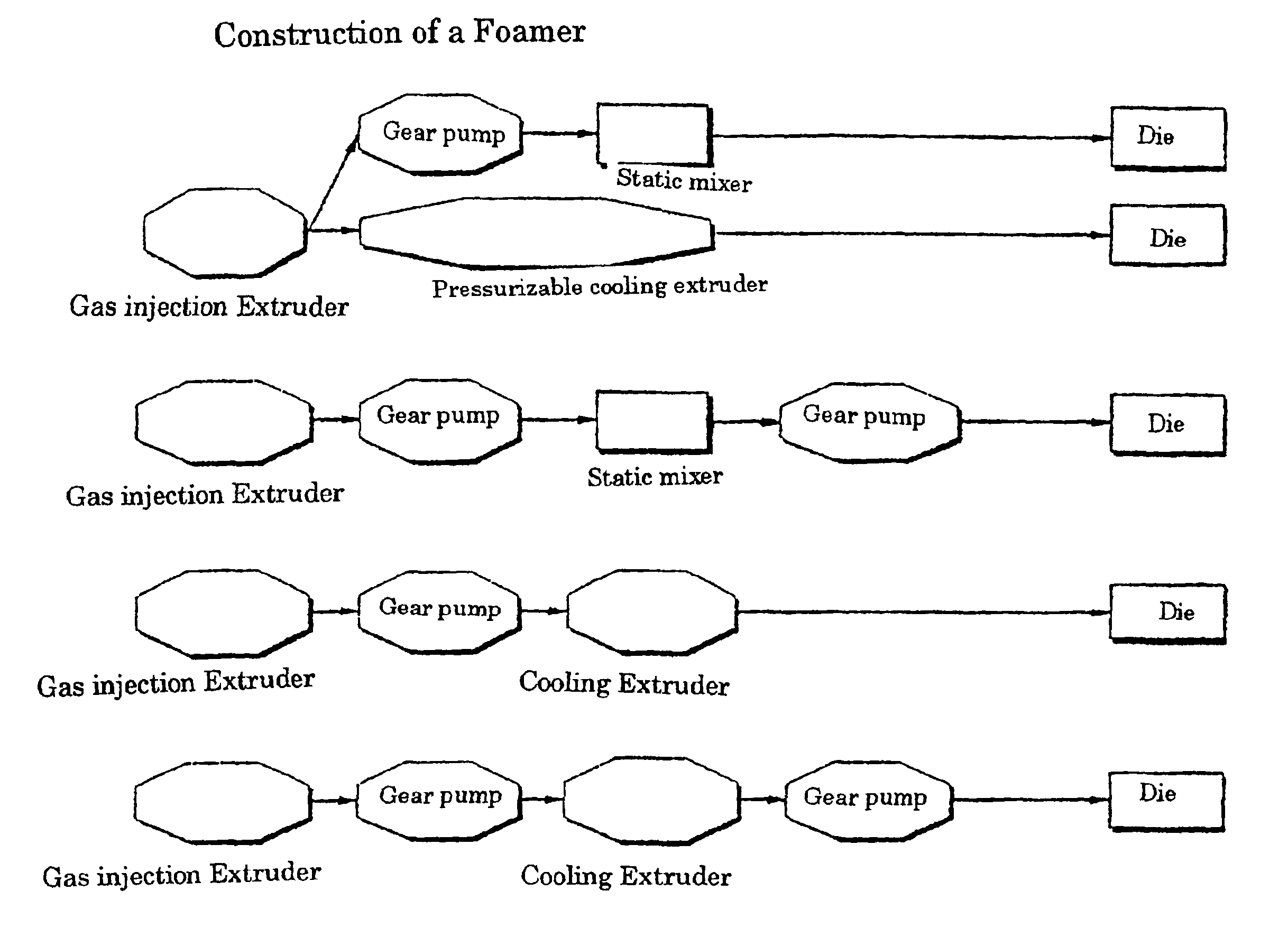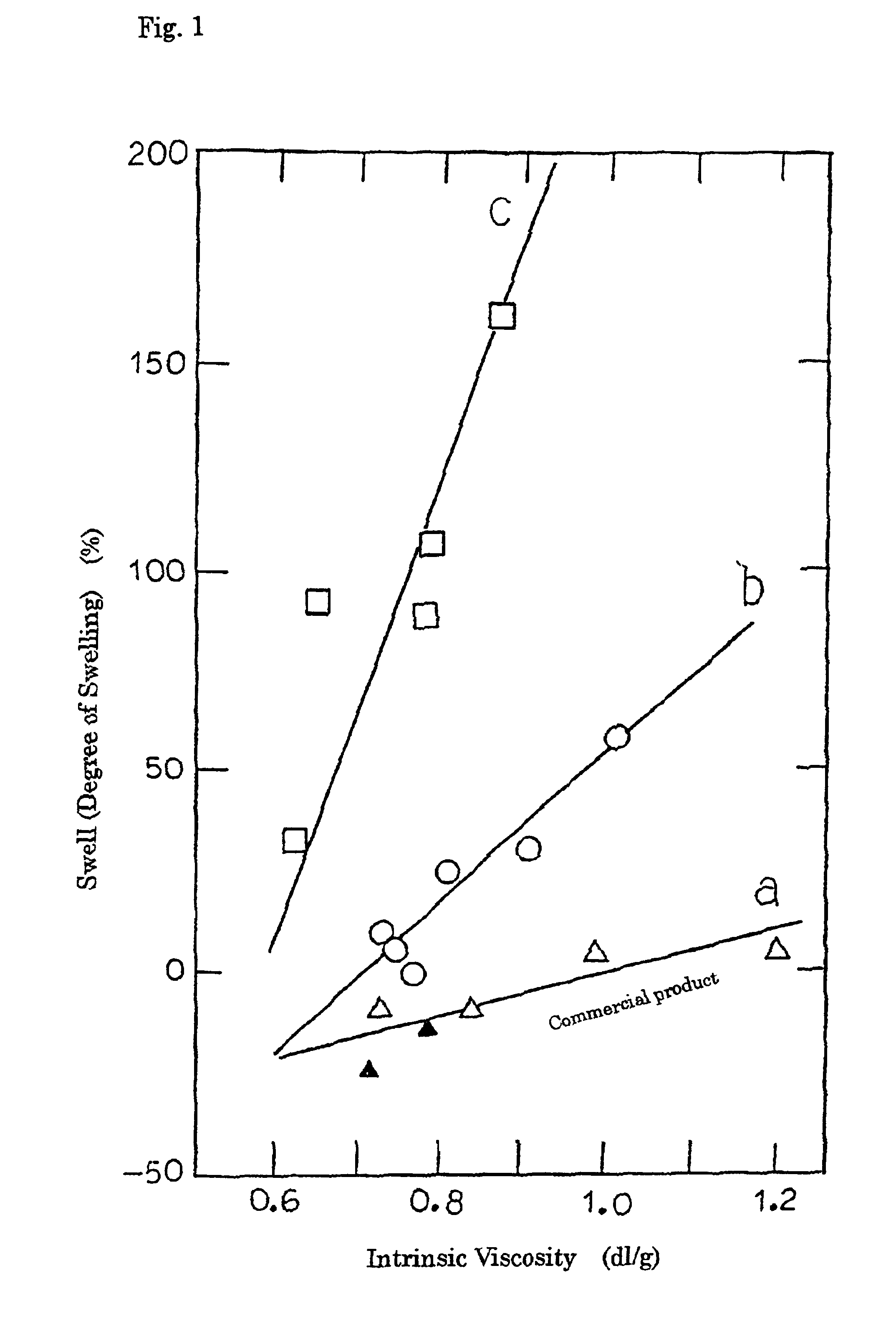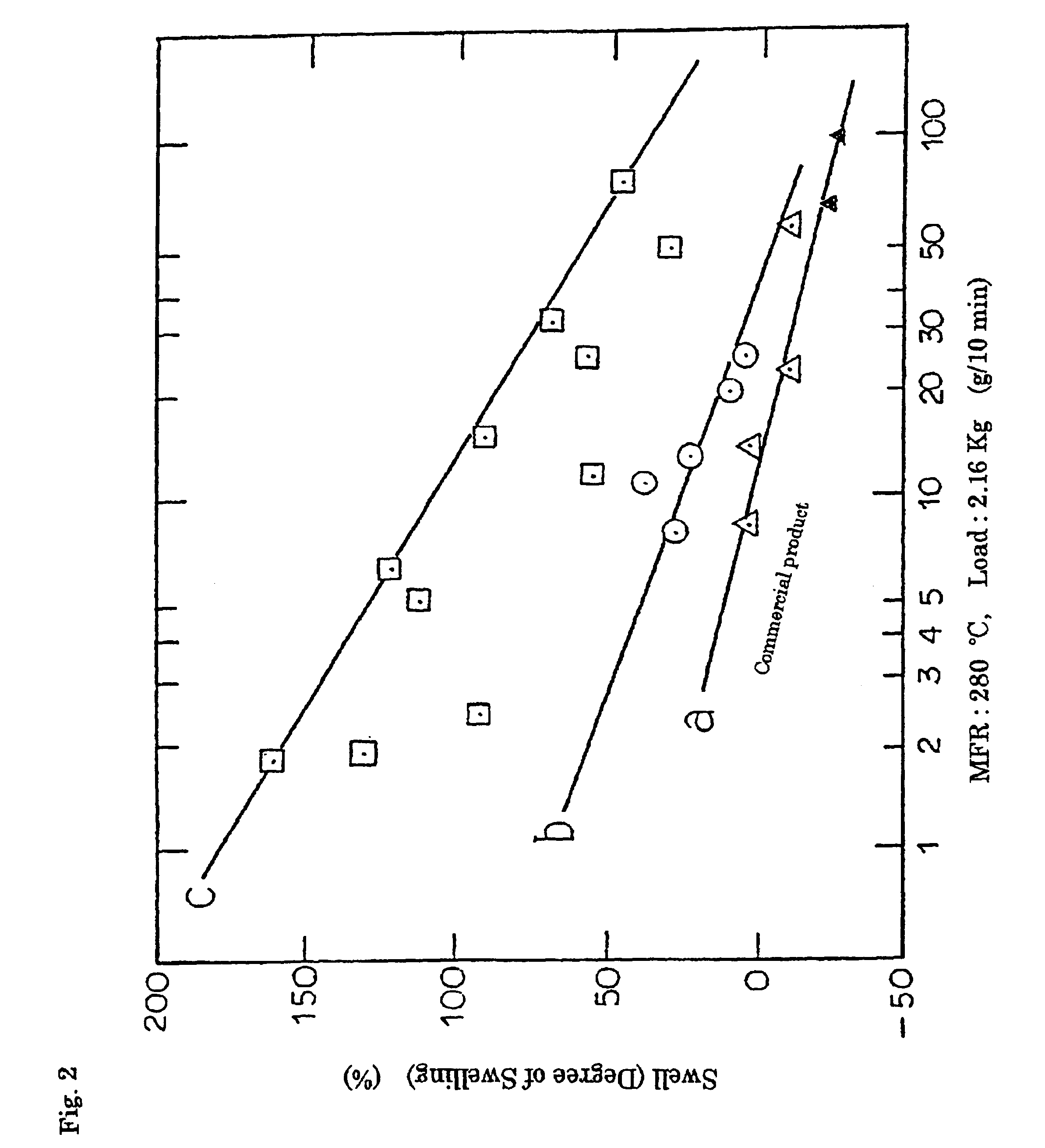Foamed polyester resin molding and process for producing the same
a polyester resin and foaming technology, applied in the field of foaming polyester resin molding and the production of the same, can solve the problems of affecting the development of recycling technology for recovered products, affecting the quality of original pet bottles, etc., to achieve the effect of improving processability, low molecular weight, and increasing molecular weight and melt viscosity
- Summary
- Abstract
- Description
- Claims
- Application Information
AI Technical Summary
Benefits of technology
Problems solved by technology
Method used
Image
Examples
example 1
[Production of medium branched polyester resin (A) using bifunctional and trifunctional epoxy coupling agents, and foam molding with chemical foaming agent]
100 parts by weight of clear flakes supplied by Yono PET Bottle Recycle K. K. (from recycled PET bottles, intrinsic viscosity of 0.775 dl / g, MFR of 65 g / 10 min) hot-air dried at 120° C. for about 12 hours, 0.6 parts by weight of ethylene glycol diglycidyl ether (Epolight 40E from Kyoeisha Yushi Chemical Co., Ltd., having epoxy equivalence of 135 g / eq, pale yellow liquid) which is a bifunctional epoxy compound as a coupling agent, 0.2 parts by weight of trimethylol propane triglycidyl ether (Epolight 100MF from Kyoeisha Yushi Chemical Co., Ltd., having epoxy equivalence of 150 g / eq, pale yellow liquid) which is a trifunctional epoxy compound as another coupling agent, and 0.1 parts by weight of manganous acetate tetrahydrate fine powder as a coupling reaction catalyst were mixed in a Henschel mixer under nitrogen atmosphere for 2 ...
example 3
In the process conditions in Example 1, without taking pellets of the polyester (A) out for further mixing, 100 parts by weight of the clear flakes, 0.6 parts by weight of ethylene glycol diglycidyl ether (Epolight 40E), 0.2 parts by weight of trimethylol propane triglycidyl ether (Epolight 100MF), 0.1 parts by weight of manganous acetate tetrahydrate fine powder, 2.0 parts by weight of a PET foaming agent master batch (Polythrene EE-201), and 0.3 parts by weight of talc were mixed in a Henschel mixer under nitrogen atmosphere for 2 minutes to prepare the flake mixture (A2). The flake mixture (A2) was processed as in Example 1 to form a foamed article. Thus, a foamed article having an expansion ratio of 1.2 times, and a foam diameter of 0.4 mm to 0.6 mm was obtained directly from the PET flake mixture without going through pellets.
example 4
[Production of high branched polyester resin (B) using trifunctional epoxy coupling agent, and foam molding with volatile foaming agent]
100 parts by weight of clear flakes supplied by Yono PET Bottle Recycle K. K. (from recycled PET bottles, intrinsic viscosity of 0.769 dl / g, MFR of 70 g / 10 min, swell of −22%) hot-air dried at 120° C. for about 12 hours, 1.1 parts by weight of trifunctional trimethylol propane triglycidyl ether (Epolight 100MF from Kyoeisha Yushi Chemical Co., Ltd., having epoxy equivalence of 150 g / eq, pale yellow liquid) as a coupling agent, and 0.15 parts by weight of calcium stearate as a coupling reaction catalyst were mixed in a Henschel mixer under nitrogen atmosphere for 2 minutes.
The flake mixture (B1) was reacted by kneading in a twin screw two stage vacuum extruder having L / D=32 and a caliber of 45 mm at a setting temperature of 270° C., and the strand was water cooled and pelletized with a rotating cutter. Pellets were hot-air dried at 120° C. for severa...
PUM
| Property | Measurement | Unit |
|---|---|---|
| Temperature | aaaaa | aaaaa |
| Fraction | aaaaa | aaaaa |
| Fraction | aaaaa | aaaaa |
Abstract
Description
Claims
Application Information
 Login to View More
Login to View More - R&D
- Intellectual Property
- Life Sciences
- Materials
- Tech Scout
- Unparalleled Data Quality
- Higher Quality Content
- 60% Fewer Hallucinations
Browse by: Latest US Patents, China's latest patents, Technical Efficacy Thesaurus, Application Domain, Technology Topic, Popular Technical Reports.
© 2025 PatSnap. All rights reserved.Legal|Privacy policy|Modern Slavery Act Transparency Statement|Sitemap|About US| Contact US: help@patsnap.com



